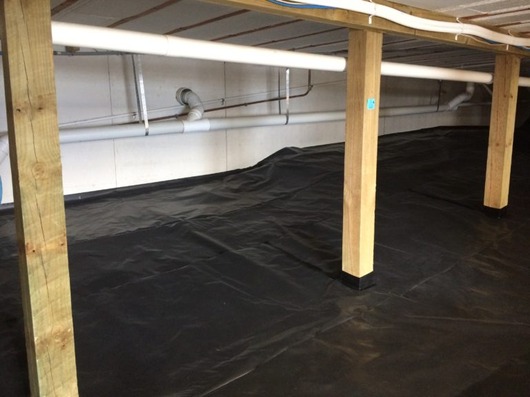Ground Moisture Barriers: Essential for a Healthy and Comfortable Home
Ensuring that homes are comfortable, energy-efficient, and promote good health is a primary concern for both homeowners and landlords. A critical factor in achieving this is proper insulation, and in New Zealand, ground moisture barriers play a pivotal role. This article explores what ground moisture barriers are, how they function, and their importance in meeting New Zealand’s Healthy Homes Standards.
Understanding Ground Moisture Barriers
Ground moisture barriers—also known as ground vapor barriers or moisture control membranes—are fundamental components of a home’s insulation system. Their main purpose is to prevent moisture from the ground from entering living spaces, thereby enhancing comfort and health within the home.

How Do Ground Moisture Barriers Work?
These barriers function by creating an impermeable layer between the soil beneath your house and the subfloor. Typically made from materials like polyethylene, they effectively block the upward movement of moisture.
Here’s how they achieve this:
- Sealing: The barrier is securely attached to the concrete or timber subfloor, eliminating any gaps or cracks where moisture could seep through.
- Proper Installation: For optimal effectiveness, the barrier must cover the entire area beneath the floor without any interruptions. It should be firmly fixed in place and free from damage such as tears or punctures.
- Material Selection: Choosing a material with low water vapor permeability is crucial to ensure that moisture cannot penetrate the barrier.
Why Are Ground Moisture Barriers Necessary?
Implementing ground moisture barriers offers several significant benefits:
- Moisture Control: They serve as the first line of defense against rising dampness, reducing the likelihood of mould and mildew developing in your home.
- Energy Efficiency: By keeping the subfloor dry, these barriers contribute to the overall energy efficiency of the house. Dry homes are easier to heat and cool, which can lead to reduced energy costs.
- Enhanced Comfort: Proper moisture control leads to a more comfortable living environment, eliminating issues like cold or damp floors.
- Health Benefits: Preventing moisture ingress helps avoid mould growth, which can negatively impact respiratory health. A dry home promotes a healthier living space for all occupants.
- Compliance with New Zealand’s Healthy Homes Standards
The Healthy Homes Standards in New Zealand were established to improve the quality of rental properties, focusing on aspects like insulation, heating, ventilation, moisture ingress, and drainage.
Ground moisture barriers are integral to meeting these standards in the following ways:
- Moisture Ingress Prevention: The standards mandate the installation of appropriate ground moisture barriers in rental properties where necessary. This requirement is essential to prevent issues related to dampness and mould.
- Ventilation Support: When used in conjunction with proper ventilation systems, ground moisture barriers help maintain a healthy indoor environment by controlling humidity levels.
Ground moisture barriers are a crucial element of home insulation in New Zealand, playing a significant role in creating comfortable, energy-efficient, and healthy living spaces.
By installing these barriers, homeowners and landlords not only comply with the Healthy Homes Standards but also enhance the overall quality of their properties. Investing in ground moisture barriers is a proactive step towards ensuring a safer and more comfortable home for everyone.
Originally published on https://www.easyinsulation.co.nz/blog/post/113756/ground-moisture-barriers/









